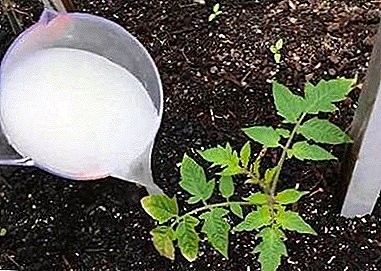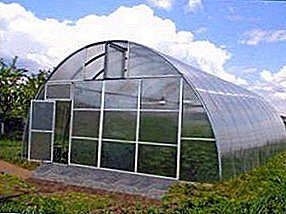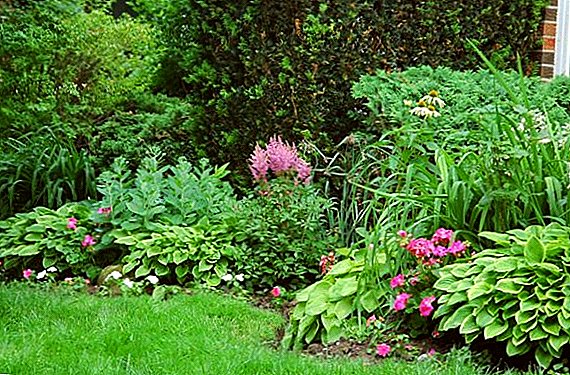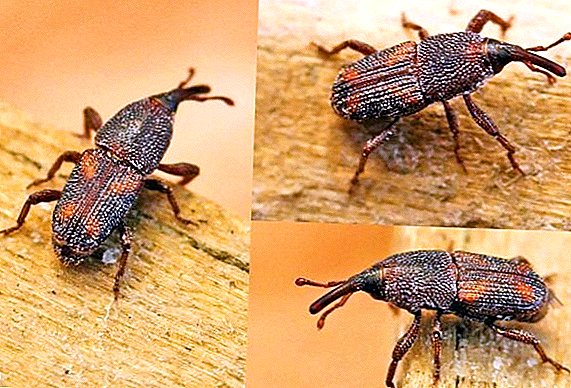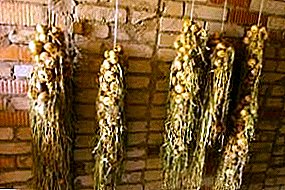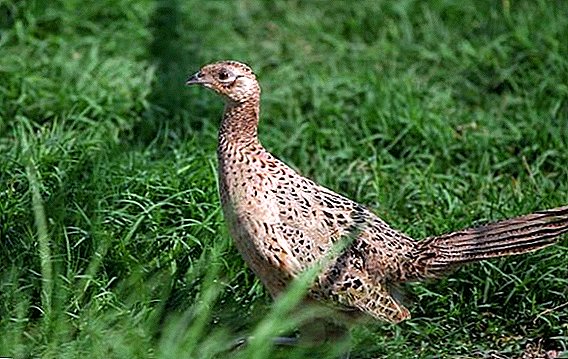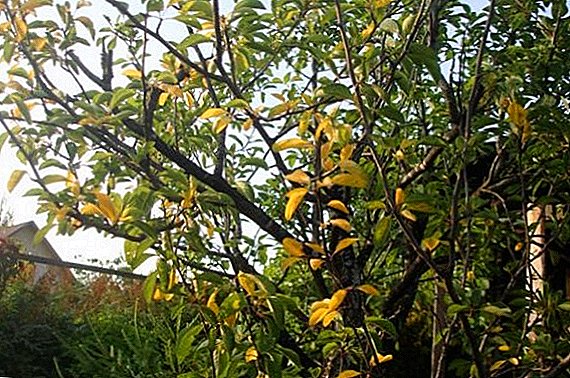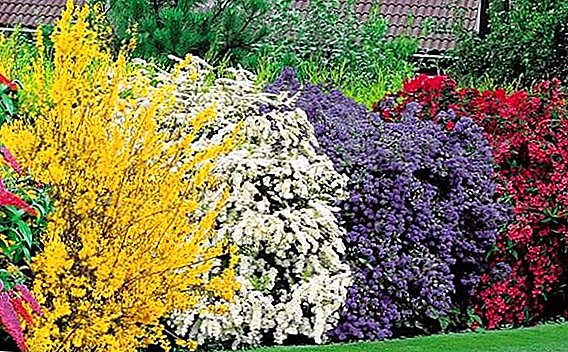 When selecting a particular type of plant, be sure to consider its adaptability to a particular climate and the nature of the soil in which it will be planted. For the territory of the Urals, the plant's hardiness is a necessary choice criterion.
When selecting a particular type of plant, be sure to consider its adaptability to a particular climate and the nature of the soil in which it will be planted. For the territory of the Urals, the plant's hardiness is a necessary choice criterion.
We have compiled a list of ornamental shrubs for the garden that grow well and bear fruit in the Urals, and also presented their photos for better information.
Velvet japanese
Used in ornamental gardening. This culture belongs to the genus Velvet, which belongs to the family of the Rutovs. His homeland is the Japanese island of Honshu. It grows very long, the maximum height (10 m) is reached by the age of 50.
Deciduous tree with a wide openwork crown. The trunk is covered with a striated thin, but dense bark, having a dark brown or dark brown color, and shoots of a reddish-brown color.
Leaves are dark green, odd-pinnate, emitting a specific aroma. Foliage consists of 5-13 ovate-lanceolate truncated, pointed or heart-shaped leaves, bent at the base. In autumn, the foliage turns yellow.  The flowers are small, yellowish-green in color, are in paniculate inflorescences, with pubescent felt axes. Fruits of spherical shape, black, glisten, emit an unpleasant odor, taste bitter, are considered inedible. Flowering occurs in June, and ripening occurs in October. The plant is not picky, suitable for growing in cities. Cold resistant.
The flowers are small, yellowish-green in color, are in paniculate inflorescences, with pubescent felt axes. Fruits of spherical shape, black, glisten, emit an unpleasant odor, taste bitter, are considered inedible. Flowering occurs in June, and ripening occurs in October. The plant is not picky, suitable for growing in cities. Cold resistant.
Learn more about such bushes as Leyland's Kupressoptsiparis, cypress, juniper, Kolobok gooseberry, acacia, black chokeberry, Brugmancia, heather.It grows slowly, and fruits in the sixth year after planting. Vegetation begins in the second half of April and lasts until mid-October. Sowing should be done no later than 12 months after collecting the seeds, otherwise they lose their germination. Drought-resistant and light-requiring. Japanese velvet tolerates pruning and haircuts well. At a young age in need of feeding. It grows well in areas of windless, moist and loamy soil.
Chubushnik
More commonly known as jasmine (due to the sweet aroma of flowers), it belongs to the Hortensia family and has more than 50 species. Shrubs 1-4 meters high. It is considered a deciduous shrub, but some representatives are semi-deciduous. The bark is thin, gray in color, and in some young bushes it is brownish. Wood with a wide core, hard. Leaves on short cuttings, simple, length 5-7 cm, opposite. The upper surface of the sheet is smooth, and the bottom is often pubescent. The shape of the leaves is varied: wedge-shaped, rounded, elongated or oval, sometimes pointed at the end of the leaf, the edges are solid or jagged.
The inflorescences are located on the edges of young shoots and in the axils of the upper leaves. The brushes consist of 3-9 flowers. Blossoms are very fragrant, but may not have a smell. The form is often simple, and in some varieties the flowers are double or semi-double. The color of the buds is delicate: white, cream, yellowish. A goblet-shaped calyx with 4-5 concave sepals. Corollas with 4-6 large-sized petals of various shapes: cruciform with a wide gap between the petals, linear, petals can enter each other and create an almost square bud.  In the photo - the chubushnik 'Mont Blanc', bred in France and belonging to the varieties of Victor Lemoine. One of the most winter-hardy representatives, suitable for growing in the cold territories of Russia.
In the photo - the chubushnik 'Mont Blanc', bred in France and belonging to the varieties of Victor Lemoine. One of the most winter-hardy representatives, suitable for growing in the cold territories of Russia.
Did you know? Chubushnik still bears the Latin name "Philadelphus", which he received in honor of the king of Egypt, Ptolemy Philadelphus. The king was famous for adoring these fragrant flowers.Varieties of chubushnik unpretentious: they can be grown in partial shade and in the sunlit area. The plant is easy to pruning, which is desirable to carry out after flowering. When droughts quickly fade, but does not tolerate stagnant water.
Before planting, follow up how closely groundwater is located, and create high-quality drainage. Bushes sometimes need to be thinned, otherwise the flowering of the bush will be scarce.
Derain white
Derain white is also called svidina or svidina white. Included in the genus Kizil, family Kizilovyh, cultivated in Siberia. The shrub is very branched, its height is up to 3 m. The branches are straight, flexible and bare, they have a bright red color, which becomes even richer in spring, by old age they are bent and become arched. The leaves are opposite, possess 3-5 arcuate veins. The sheet plate is in the form of an ellipse, the edges are solid, on both sides it has pressed, short pubescence, bluish below, dark green above.
The flowers are collected in dense bushy shields. The pedicels are covered with thick gray pubescence with a reddish tinge. Calyx wide triangular with short sharp teeth. Corollas broadly lanceolate with 4 white petals. Fruits - drupes are berry-shaped: flattened, during the period of ripening blue shade, and ripened - light blue. The stone is oblique, pointed at the end, ellipsoid. Often planted in parks and gardens. Seeds spread birds, the plant is able to run wild.  Shrub varieties adapted to the climatic conditions of the Urals and are frost-resistant, have the following names:
Shrub varieties adapted to the climatic conditions of the Urals and are frost-resistant, have the following names:
- 'Cream Cracker';
- 'Sibirica variegata';
- 'Aurea';
- 'Elegantissima';
- 'Kesselringii';
- 'Spaethii'.
Girlish grapes
The maiden grape belongs to the Vinogradov family. It is called so because of the formation of berries, which occurs without pollination. For growing in the Urals, they often use the five-leaf type of girlish grapes. This ornamental plant belongs to the fast-growing, in nature it grows up to 30 meters. Rises on smooth surfaces thanks to the antennae, which have sticky pads. Palate-folded leaves are petiolate and ovate to one petiole. The top of the sheet is pointed, the edge is serrate, on top of green, and the back is blue-green, in autumn it changes color to bright red.
Small green buds collected in 3-5-flowered inflorescences, bloom in the second half of spring. And the fruits ripen at the end of summer or in the first month of autumn, have a pronounced dark red color. The berries of girlish grapes contain oxalic acid. Fruits are edible for birds, but not for humans.  Well performs the role of a screen and canopy on the site.
Well performs the role of a screen and canopy on the site.
Forsythia
Genus of shrubs and small trees of the Maslin family. Height from 1 to 6 meters. The bark is rough, gray-brown. Leaves with notches, simple, oval, without stipules. The leaves are located opposite.
Bright yellow flowers look like bells, calyx four-lobed, corolla with accrete petals. The fruit is in the form of a box, opened by nests, has several winged seeds.  An oval, intermediate, and wilted forsythia is grown in the Urals. It is adapted to frost and drought, reproduction occurs by layering or dividing the bushes. Of the seeds are practically not grown, because they have low germination. Flowering begins in the third year after disembarkation (during the month). After that appears bright foliage, remaining until deep frost.
An oval, intermediate, and wilted forsythia is grown in the Urals. It is adapted to frost and drought, reproduction occurs by layering or dividing the bushes. Of the seeds are practically not grown, because they have low germination. Flowering begins in the third year after disembarkation (during the month). After that appears bright foliage, remaining until deep frost.
Beautiful ornamental forsythia shrubs for the garden:
- 'Variegata';
- 'Parkdekor';
- low grade 'Tetragold';
- 'Spring Glory';
- 'Dresden Vorfruehling';
- 'Fiesta';
- 'Lynwood';
- 'Beatrix Farrand';
- wonderful forsythia (spectabilis);
- forsythia blooms (densiflora);
- primrose forsythia (primulina).
Kalina Buldenezh
Ornamental bush of viburnum, or roseum ("buldenezh" in French means "snow globe"). The height of the bush is up to 3 meters, with a wide spread crown.
The inflorescences are spherical, the flowers are barren, first greenish, later white, and when fading they turn pink. Kalina blooms for 25-30 days. Loves landing at the reservoir. Beautiful in single and group landing. In winter, it is partially cut, and breeding is produced by cuttings. A high percentage of summer and spring cuttings are rooted. Buldenezh loves leaf beetle and aphid, which will have to periodically fight. The most effective method of struggle is chemical treatment.
Did you know? Kalina Buldenezh first appeared on the territory of Russia in the time of Catherine II and was considered an aristocratic plant. Grown only in the royal greenhouses, gardens and parks.
 The plant is purely decorative and, unlike viburnum ordinary, does not give berries.
The plant is purely decorative and, unlike viburnum ordinary, does not give berries.The cinquefoil is shrubby
Potentilla shrubby, or Kuril tea, is the largest in terms of species species of shrubs from the Pink family.
Check out the list of drugs that will be useful to you in the care of a garden: a vitriol, potassium sulfate, Inta-vir, Fundazol, Heteroauxin, boric acid, Chom, Fufanon, and Prophet.Stems are often erect, extended or ascending. Leaves partitioned or ternate. There are species in which the flowers are solitary, but most of them are collected in false umbrellas or scape-like paniculate inflorescences. The flowers consist of a five-leafed calyx and an underside, five notched or obtuse at the top of the falling petals.
The color is diverse: white, pink, yellow with different shades. Stamens are often 20, filiform and styloid. Pestles are small, often located at the top and attached to the receptacle. Fruits are many, consist of 10-80 seeds and fall one by one. The shrub is not only incredibly beautiful during flowering, but also very useful.  Scientists have found that Kuril tea has antimicrobial activity aimed at combating intestinal infections and even cholera vibrios. Bred by grafting or dividing the bushes.
Scientists have found that Kuril tea has antimicrobial activity aimed at combating intestinal infections and even cholera vibrios. Bred by grafting or dividing the bushes.
Important! For winter, be sure to cover freshly planted cuttings. They may even appear buds that are important to pinch so that they do not start blooming.A month after planting, 90% of the cuttings have roots.
Bladder
Bubbyplodnik is a genus of deciduous shrubs of the Pink family. Ornamental shrub suitable for single and group plantings. Stagnation and excess moisture does not tolerate.
Crohn thick, brown-gray bark peels off the plates. Foliage toothed, 3-5 palmate-like, petiolate, stipules fall off. The leaves redden in autumn, later turn yellow and turn brown. The flowers are in the corymbose inflorescences, located at the ends of short branches on the sides, white or pink. Sepals and five petals, many stamens (up to 40), pistils from 1 to 5, fused at the base and containing 1-5 seeds. Hypanthium is bell-shaped.
The fruit consists of leaflets, when ripe it becomes red and torn at the top. For decorative cultivation use several varieties of Califolia blisterpipe, which are combined into 2 groups of varieties: yellow-leaved and red-leaved. In the photo - a variety of caliniformes.  Red leaf varieties:
Red leaf varieties:
- 'Diablo' - in height to 3 m, glossy purple-red leaves, when disembarking in the shaded area become green.
- 'Summer Wine' - in height up to 2 m, in spring leaves are wine-red, in summer green.
- 'Red Baron' - stands out pinkish flowers, red berries. Height up to 2 m.
- 'Luteus' - height up to 3 m, the leaves are yellow.
- 'Dart's Gold' - reaches a height of up to 1.5 meters, the foliage is yellow-orange in color, in summer it is green, in the fall it is bronze-yellow.
Spirea
Spirea is a genus of deciduous shrubs of the Pink family. Height from 15 cm to 2 m. The root system is poorly developed, superficial. The branches are spread, erect, rise or creep, light or dark brown, the bark exfoliates longitudinally. Young shoots of different color: from green to brown. The buds are small, from ovate to pointed. The leaves are petiolate, alternate, narrow-lanceolate and round, simple and toothed.
Scythe brushes (at the base with a rosette of leaves), sessile or nearly sessile umbrellas. Letum blossoms have simple or complex plates, late flowering - pyramidal, cylindrical or elliptical shaped plates. The flowers are bisexual, sometimes dioecious, the color depends on the type of plant: white, pink, red, purple. Hypanthium is bell-shaped or cup-shaped. Leaves oblong or rounded.  Spiraea grows in all climatic conditions, unpretentious.
Spiraea grows in all climatic conditions, unpretentious.
Important! The soil acidity at the landing site should not be higher than 7 units, otherwise the bush will not take root.For cultivation in the Urals, there are several popular types of ornamental flowering spirea shrubs for the garden:
1. Spring :)
- Spiraea oak (Spiraea chamaedryfolia);
- Spiraea nipponskaya (Spiraea nipponica) - can freeze slightly, but can be quickly restored;
- Spiraea sharp-serrated or argut (Spiraea arguta) - after heavy frosts it is quickly restored;
- Spiraea gray or ashen (Spiraea cinerea) - has similarity with agruta, but is more frost-resistant;
- Spiraea three-blade (Spiraea trilobata).
- Spiraeus Billard (Spiraea billardii);
- Spirea Ivolistnaya (Spiraea salicifolia);
- Spiraea lilac (Spiraea syringaeflora) - sometimes freezes, but it does not damage the flowering;
- Japanese Spiraea (Spiraea japonica);
- Spiraeus Bumalda (Spiraea bumalda).
Honeysuckle
Genus of shrubs upright, creeping or climbing, typical genus of the family Honeysuckle.
You will certainly be interested to read about edible honeysuckle, decorative honeysuckle, honeysuckle honeysuckle.Its fruits are a huge source of vitamins. Berries in the shape of a jug, rounded, spindles, have a knobby surface. Honeysuckle is hardy and heat resistant. The flowers do not crumble when frosts spring. Yields a crop, even if it is not looked after, but its quality may suffer. Plant in a well-lit area.

Important! You need to plant several varieties of honeysuckle at once, otherwise you will not have to wait for the harvest. Honeysuckle is able to pollinate only different varieties of pollen.Gradually harvesting, fruiting begins in the second or third year after planting. Under the conditions of the Urals, it is possible to collect an average of 2.5 kg of berries from one bush.
Early maturing varieties:
- "Amazon";
- "Maria".
- "Elizabeth";
- "Gorlinka";
- "Ural".


